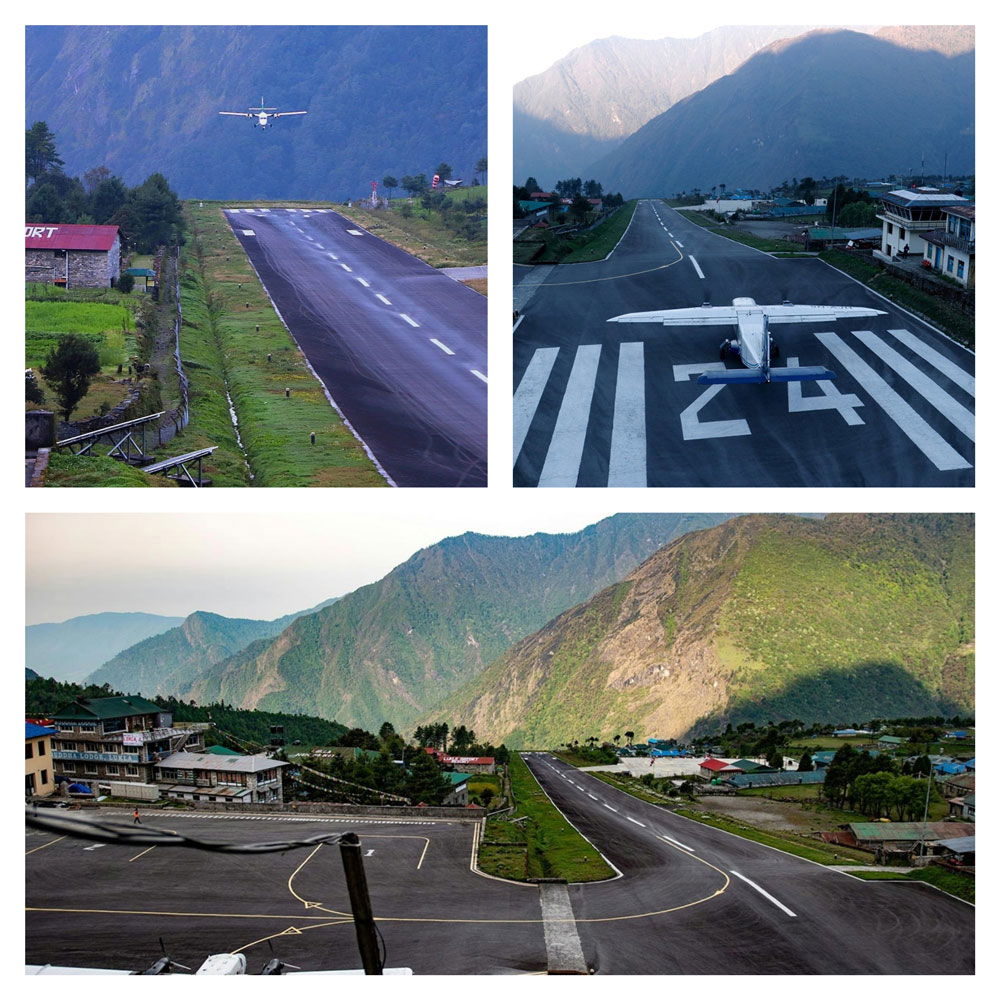Is the Flight from Kathmandu to Lukla Dangerous?: The Ground Reality
Flying from Kathmandu to Lukla is often described as one of the most thrilling and nerve-wracking experiences in the world. Nestled in the Himalayas, Lukla Airport also named by Tenzing Hillary Airport, is the gateway to Mount Everest, attracting thousands of trekkers each year. But with its high-altitude landing strip, unpredictable weather, and dramatic setting, many people ask the same question: “Is the flight from Kathmandu to Lukla dangerous?” In this article, we’ll give you the complete picture—from real risks to safety improvements, from emotional experiences to practical tips.

Table of Contents
- What Makes the Kathmandu to Lukla Flight Unique?
- Where is Lukla Airport Located?
- Why Do People Say Lukla flight is Dangerous?
- Safety Measures in Lukla Airport
- Historical Context and Safety Record
- How Safe is Lukla Airport Today?
- Weather Conditions: The Game Changer
- The Role of Experienced Pilots
- Airplane Types: Are They Reliable?
- What to Expect During the Flight
- Should You Be Scared? Myths vs. Reality
- Alternatives to Flying to Lukla
- Final Thoughts on Flying to Lukla
What Makes the Kathmandu to Lukla Flight Unique?
The flight from Kathmandu to Lukla is a 35-minute thrill ride into the heart of the Himalayas. With jaw-dropping mountain views, a tiny airstrip carved into a mountain ridge, and the landing at 2,860 meters (9,383 ft), this flight is like no other. Think of it as landing a plane on a giant seesaw on the side of a cliff—adrenaline meets altitude.
Where is Lukla Airport Located?
Lukla Airport is perched high in Nepal’s Solukhumbu District, surrounded by some of the tallest mountains on Earth. The runway is only 527 meters (1,729 feet) long with a sharp drop at one end and a solid stone wall at the other.
Why Do People Say Lukla flight is Dangerous?
The following are the main reasons:
1. Unpredictable Weather
The Himalayan weather is notoriously volatile. Flights operate only in the early morning when visibility is clearest, as clouds, fog, and strong winds often roll in by mid-morning. Sudden weather changes can lead to flight delays or cancellations, and pilots must navigate carefully to avoid turbulence caused by the surrounding peaks.
2. Small Aircraft
The flight is operated by small, twin-engine propeller planes, such as the Twin Otter or Dornier 228, which carry around 15-20 passengers. These planes are designed for short takeoffs and landings (STOL), but their small size can make passengers feel more vulnerable, especially in turbulent conditions.
3. High Altitude
Lukla’s high altitude means thinner air, which affects aircraft performance. Pilots must be highly skilled to manage the reduced lift and engine power in these conditions.
4. Lack of Navigation Aids
Unlike modern airports, Tenzing-Hillary Airport lacks advanced navigational aids called ILS. Pilots rely on visual flight rules (VFR), meaning they need clear visibility to navigate the mountainous terrain manually. This makes the flight heavily dependent on good weather.
Safety Measures in Lukla Airport
While the flight has inherent risks, several factors mitigate the danger:
1. Highly Skilled Pilots
Pilots flying the Kathmandu-Lukla route are among the most experienced in the world. They undergo rigorous training and must meet strict qualifications to operate in such challenging conditions. Many have thousands of hours of flight experience in the Himalayas.
2. Strict Weather Protocols
Airlines prioritize safety and will not fly if weather conditions are unfavorable. This often leads to delays or cancellations, but it’s a testament to the strict safety standards in place.
3. Well-Maintained Aircraft
The planes used are specifically designed for high-altitude, short-runway operations. They undergo regular maintenance to ensure reliability in these demanding conditions.
4. Improved Infrastructure
Over the years, Tenzing-Hillary Airport has seen upgrades, including runway resurfacing in 2008, which improved safety. Air traffic control and communication systems have also been enhanced.
Historical Context and Safety Record
The Lukla flight has had a few accidents in the past, not many, which contributes to its reputation. Notable incidents include crashes in 2008 and 2019, often attributed to weather. However, the safety record has improved significantly in recent years due to better training, stricter regulations, and improved aircraft maintenance. Accidents are rare, and thousands of flights operate safely each year, carrying trekkers and locals alike.
How Safe is Lukla Airport Today?
In recent years, safety standards have greatly improved. Nepal’s Civil Aviation Authority has increased oversight, and airlines have become more cautious. Flights are now strictly operated only in good weather, and pilots undergo special training for Lukla landings.
Key note: The Civil Aviation of Nepal Government have moved the Lukla Flights from Kathmandu Airport to Ramechhap Airport during peak seasons to avoid air congestion and delays. Peak season is considered from mid September to end of November and from March to May.
Weather Conditions: The Game Changer
The weather in the Himalayas is like a moody teenager—unpredictable and fast-changing. Fog, wind, and clouds can roll in within minutes. That’s why flights often get delayed or canceled, sometimes for days.
The Role of Experienced Pilots
Flying to Lukla isn’t for rookies. Pilots need at least 100 short take-off and landing (STOL) flights, including 10 flights into Lukla with an instructor, before they’re allowed to captain a flight there.
Most Lukla pilots are highly experienced and have flown in Nepal’s challenging terrains for years. Their local knowledge is often the key to a safe flight.
Airplane Types: Are They Reliable?
The most common aircraft used are Twin Otters and Dornier 228s. These planes are specifically designed for short, rugged runways and high-altitude operations.
They might be small, but they’re strong and built for this kind of flying. Think of them as the mountain goats of the aviation world.
What to Expect During the Flight
During the Lukla flight, you’ll see Kathmandu’s urban sprawl or Ramechhap’s rural fields fade into green valleys, terraced hills, and snow-capped Himalayan peaks. The plane weaves through narrow valleys with Sherpa villages, culminating in a descent to Lukla’s short, cliffside runway. Left-side seats offer the best views of Everest and other peaks.
Should You Be Scared? Myths vs. Reality
It’s natural to be nervous, but the fear is often blown out of proportion. If Lukla was truly unsafe, airlines wouldn’t fly there. Risk exists, but it’s managed with experience, training, and smart decisions.
Most people after land in Lukla, step off the plane, and say,
“Wow! It was amazing and wasn’t as risky as I thought!”
Alternatives to Flying to Lukla
If you are not keen on flying, you can drive from Kathmandu to Salleri to Surke and start trek which adds 3–4 days to your trek. It’s a scenic route with fewer crowds and gives your body more time to acclimatize.
Final Thoughts on Flying to Lukla
So, is the flight from Kathmandu to Lukla dangerous?
The flight isn’t without risks, but it’s not as dangerous as its propaganda says.
With experienced pilots, strict weather protocols, and specially built aircraft, this journey is more adventure than danger.
For thousands of trekkers each year, this flight is the beginning of something incredible. It is a step toward the world’s highest peak.




